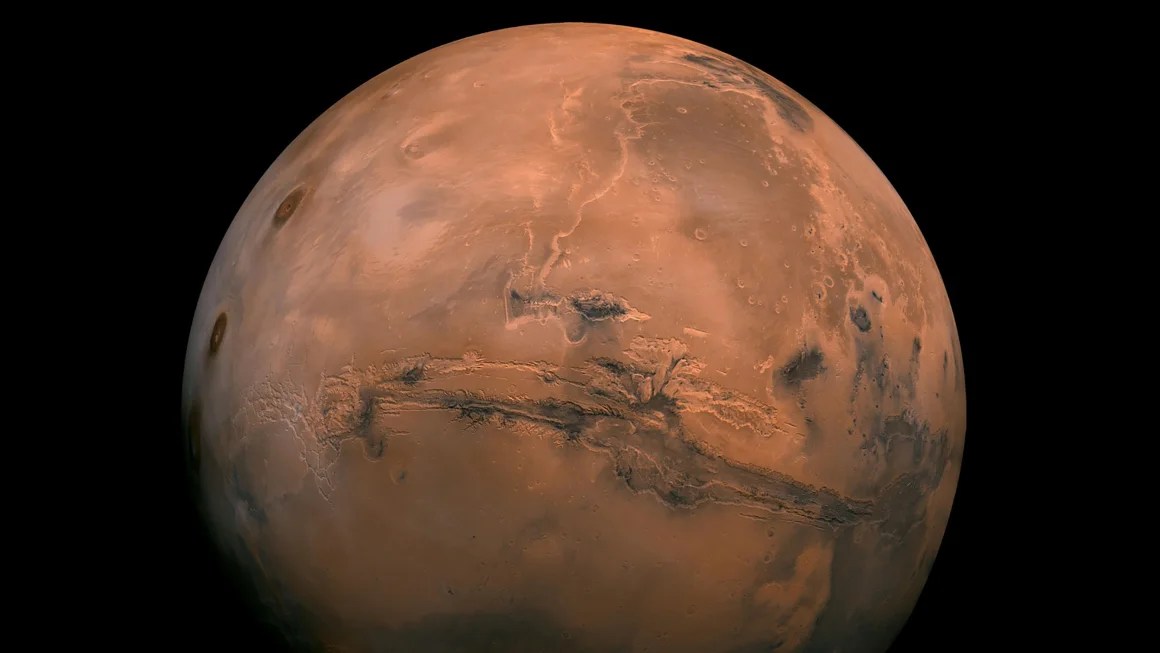(CNN) — Mars may be 140 million kilometers from Earth, but according to new research, the Red Planet is influencing our deep oceans by helping to drive “giant eddies.”
In an effort to better understand the strength of deep-sea currents, scientists have analyzed sediments drilled into hundreds of deep-sea platforms over the past half century.
What they found surprised them.
The sediment revealed that deep ocean currents have weakened and strengthened over 2.4 million year climate cycles, according to a study published Tuesday in the journal Nature Communications.
Adriana Dutkiewicz, a sediment expert and co-author of the study at the University of Sydney, said scientists did not expect to find these cycles and there is only one way to explain them: “They are linked to cycles at the interaction of Mars and Earth. It goes around the Sun,” she said in a statement. The authors say this is the first study to establish these links.

(pot)
The two planets influence each other through a phenomenon called “vibration,” which occurs when two orbiting bodies pull each other using a gravitational force that is sometimes described as a kind of syncopation between distant planets. This interaction changes the shape of their orbits, which affects their proximity to the circular orbit and their distance from the Sun.
For Earth, this interaction with Mars results in periods of high solar energy (i.e., a warm climate) and these warm cycles are associated with more intense ocean currents, the report says.
While these 2.4 million year cycles affect ocean warming and currents on Earth, they are not natural climate cycles and related to the rapid warming the world is experiencing today because humans continue to burn ocean-warming fossil fuels. Professor of Geophysics at the University of Sydney and co-author of the study.
The authors describe these currents, or eddies, as “giant eddies” that can reach the bottom of the deep ocean, erode the seafloor, and create large accumulations of sediment that resemble snowdrifts.
The scientists were able to map these strong eddies through “breaks” in the sediment cores they analyzed. Under calm conditions deep-sea sediments are deposited in continuous layers, but strong ocean currents change this and seal their existence.
While satellite data that can detect changes in ocean circulation are only available for a few decades, sediment cores are particularly useful for understanding changes in circulation during warmer climates, helping to build a picture of the past millions of years ago. , Mueller told CNN.
If current human-caused warming continues on its current path, Muller said, “this effect will dampen all other processes in the long run. But the geologic record still provides valuable information about how the oceans behave in a warming world.”
The authors suggest that these eddies may help mitigate some of the effects of a potential collapse of an important ocean circulation, the Atlantic Meridional Overturning Circulation (AMOC), which acts like a giant ribbon. Tropics to the Far North Atlantic Ocean.
Scientists are increasingly sounding the alarm about the health of this important stream system. There are fears that it may even show early signs of collapse as global warming warms the oceans, melts ice sheets and upsets the delicate balance of heat and salt that determines the strength of the AMOC.
A collapse could have catastrophic climate effects, including a rapid drop in temperature in some places and a rise in others.
“Our work says nothing about what may or may not happen to AMOC,” Mueller said. “Our view is that even if the AMOC ceases, there are still other processes to mix the ocean, although their effects will be quite different.”
If the AMOC were to stop, oxygen-rich surface water would no longer mix with deep water, leading to a stagnant ocean that is largely devoid of life, it is feared. “Our results suggest that more intense eddies in the deep ocean in a warming world may prevent such ocean stagnation,” he said.
Joel Hirschi, co-head of Marine Systems Modeling at the UK's National Oceanic Centre, who was not involved in the research, said the finding of a 2.4-million-year cycle in ocean sediments was noteworthy. The method is perfect and a connection to Mars is possible, he added.
But, he told CNN, “the proposed link to ocean circulation is speculative and there is little evidence that deep ocean circulation linked to eddies in warm climates is strong.”
Satellite observations show that these eddies have become more active in recent decades, but the currents don't always reach the sea floor, meaning sediment accumulation can't be prevented, he said.
The authors of the study said in a statement that it is not yet clear how deep-sea currents and the various processes affecting marine life will evolve in the future, but they hope the new study will help build better models of climate effects.



:quality(85)//cloudfront-us-east-1.images.arcpublishing.com/infobae/SVSWO4BVDNF7BJ4W33HOOWF73Y.png)
